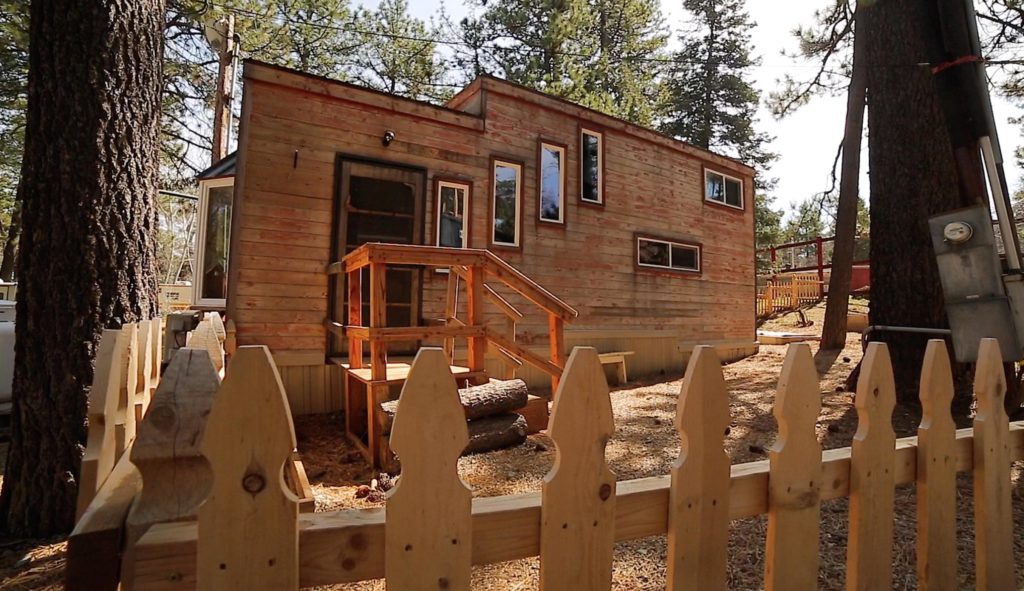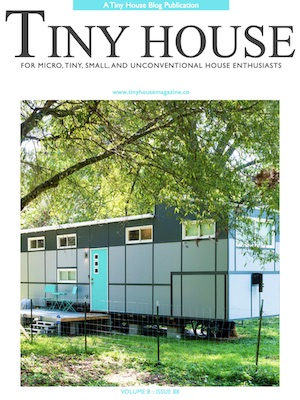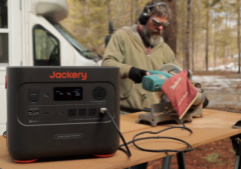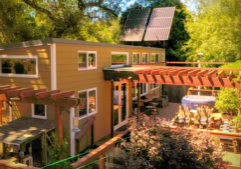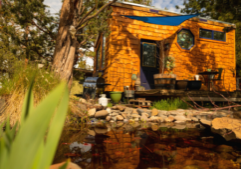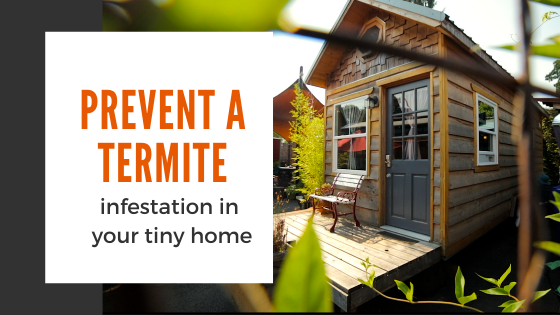
How To Prevent A Termite Infestation In Your Tiny Home
Believe it or not, we had a brief run with termites when we briefly parked in Fresno, California. Fortunately, they only got as far as our exterior storage box.
One of the largest draws towards the tiny house movement is the desire for a simpler life. Less space equals less stuff, which leads to less stress and worry. Unfortunately, even with an eco-friendly tiny home, you still have to beware of outside pests like termites, especially if your home is built from wood.
There are over 2,000 types of termites around the world just waiting to make a meal out of your home.
In many cases, homeowners don’t even know that they have a problem until there is significant damage already done.
Many termites look similar to a variety of common winged ants that may be overlooked when they are first spotted.
In coastal areas of the U.S., including Rhode Island, the most common and destructive variety of termites is known as the Eastern Subterranean. Rhode Island and the surrounding area is the perfect spot for these wood-eaters to swarm.
It’s common for nests to swarm shortly after rainfall during the spring months, and it doesn’t take long for a home infestation to take hold.
According to a specialist in pest control in Rhode Island, signs of termite damage are not always obvious to a homeowner that is not familiar with the signs of infestation.
Hiring pest control can help you to identify a problem and suggest the best treatment options. If you suspect that you may have a termite problem you may notice some of these signs in and around your home:
- Bubbling or uneven surface on your painted walls
- Dark spots or blistering of your wood surfaces
- Evidence of mud tubes on the exterior of your home
- Hollow sound when knocking on wood surfaces
- Small mounds of sawdust looking termite feces
Billions of dollars of property damage is caused by termites every year across the country.
To help protect your home, there are a few things that you can do to help prevent a termite infestation from taking over your tiny house.
Repair Water Damage
Many varieties of termites are attracted to wood that is weakened by moisture. To prevent infestations it’s important to inspect all of your pipes and drainage systems regularly.
Any kind of water leak can lead to potential wood damage in the main structures of your home. Many of these areas are hidden from plain view so prevention is the key.
Seeping water can also lead to damaged wood structures. If you have a gutter system, make sure that your drain pipes are properly diverting water away from your foundation or trailer.
Your gutters should be cleaned out at the beginning of each season and following any storms that may have blown debris onto your roof.
Move Your Woodpile
Termites are obviously attracted to wood, so it makes sense that even if your home’s exterior is not constructed from wood that you should keep other wood sources at a distance. If you have a woodpile, you should keep it at least 20 feet away from your home.
Although this may seem a bit inconvenient, it will help to keep a reasonable distance between you and any termite nests that establish in your pile.
You may also want to cover your woodpile with a canvas or plastic tarp to keep the rains from creating a moisture-rich haven for termites. Placing your woodpile on a concrete or metal platform that is raised off the ground can help discourage termites from making a nest.
Tree Pruning
If your tiny home is situated on a wooded lot you should be doing everything you can to prevent a termite infestation. Hanging branches from overhead trees can provide the perfect highway for insects to gain access to the roof.
Keep your overhanging branches trimmed back to eliminate access to your home.
You should also be careful of decorative trees that are planted around your home for landscaping. However, redwood and cypress trees are less likely to attract a swarm of termites and can be safely used closer to your home.
Landscaping & Cleanup
Wood chips that are commonly used to decorate landscaping and gardens around your tiny home can be an attractive home base for a colony of termites. It’s wiser to lay gravel or just topsoil in your gardens to deter termites from setting up a nest.
Keep your property clean of fallen branches, piles of leaves or debris. Not only do these things present a safety hazard but they can create environments in which termites can thrive.
If you are seeing signs of a possible termite infestation it’s important to act fast. Call in the professionals that can advise you about the right treatment for the type of insects that have invaded your home.
In the meantime, it’s important to do what you can by following these guidelines to help you prevent a termite infestation in your tiny home.
And be sure to look through our blog for more tiny living tips and inspiration!
Digital Magazine Dedicated to Micro, Tiny & Small Home Living
Do you have more time at home? Enjoy some inspirational reading from Tiny House Magazine!
- Discover different types of tiny houses from liveaboard boats to Alaskan yurts, converted school buses to high wall tents.
- Try recipes from a tiny house kitchen. Each month we feature a recipe from the Tiny House Foodie. Learn to make it work and still cook like a pro.
- Hear from those living with kids in a tiny house. What happens when you build for two but end up with four? Can it really be done?
- Read excerpts from books on tiny houses, downsizing, and a host of other related topics.
- Each month brings new topics and new, exciting articles!

